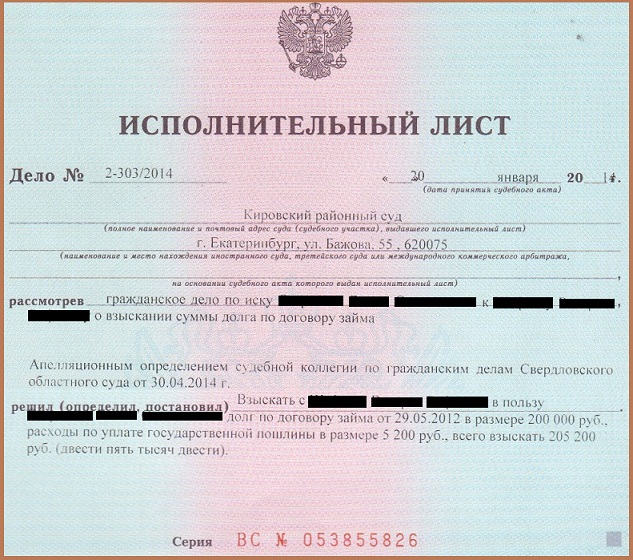Enforcement proceedings are instituted by bailiffs after a relevant court decision has been taken. As part of this process, bailiffs can use various measures, the main purpose of which is the forced collection of money from the debtor. Funds received as a result of the work of the contractor are sent to creditors to pay off debts. Bailiffs on the basis of official requests can receive information about which accounts are opened with the non-payer in banking organizations. Therefore, they can transfer a writ of execution to the debtor's bank. The process can be carried out even by the direct creditor, if he has information about the presence of any debtor accounts in organizations.
What activities are carried out as part of enforcement proceedings?
Initially, a court session is held, the main purpose of which is the collection of debt from the non-payer. The plaintiff is a creditor who wishes to obtain his funds by forced means. If there is strong evidence, the court satisfies the claims, therefore, on the basis of a court order or writ of execution, enforcement proceedings are instituted.
The bailiff appointed by the contractor may use the following methods of collecting money:
- filing a writ of execution to the debtor's bank, which leads to the withdrawal of money in accounts, after which they are transferred to the creditor;
- search and seizure of property or accounts;
- collection of a certain amount from the official salary of the debtor;
- confiscation and sale of various values.
All these actions are aimed at repaying the debt held by the non-payer. Most often, a method is used that involves sending requests to different banks. Banking organizations are obliged to transmit to the bailiffs information on all accounts opened for the debtor. If there are funds in these accounts, then they can be withdrawn to pay off the debt. For this, a writ of execution is transferred to the debtor's bank. The process can be carried out even by the direct collector or his official representative.

Can this document be submitted to the bank?
Presentation of the writ of execution to the debtor's bank is a legal process, implemented on the basis of a court decision. This document may be used by the lender for various purposes:
- transfer to the bailiff appointed by the performer in a particular case;
- submission to a bank where the debtor has an open account.
Only one sheet is issued by the court, so the lender decides on his own where this document will be sent. Usually it is transferred to the bailiff, who independently identifies where the debtor has open accounts. After that, the contractor himself sends the writ of execution to the desired bank.
Which bank should I contact?
If the lender prefers to independently recover funds from the non-payer and therefore wants to transfer the writ of execution to the debtor's bank, then he must first obtain information about which institution the non-payer has open accounts in. You can identify the necessary information in various ways:
- if initially the debt was formed on the basis of wire transfers, then the creditor must have the details of the debtor's account;
- Independent contact with different banking institutions is an unnecessary procedure, as employees of organizations do not have to distribute confidential information about their customers;
- information can be provided by authorized bodies only if there are legal grounds, therefore, you can request the tax service located at the place of residence of the defendant;
- if a request is sent to the Federal Tax Service, then the specialists of this service must provide a written response within 10 days after receiving the application;
- in addition, the lender may turn to bailiffs, who can send requests to different banking institutions.
If a person who wants to return his funds prefers to independently recover, then he will have to face some difficulties associated with finding banks in which there are open accounts with the debtor.

How to present a writ of execution to the debtor's bank?
As soon as all banking institutions in which the payer has open accounts are identified, it is important to start transferring the writ of execution to these organizations. The procedure involves the following actions:
- a statement is being prepared;
- it, together with the writ of execution, is transferred to the bank employee;
- You can transfer the documentation in person, for which you visit the department of the institution, and you can also send it by registered letter, but for this it is important to pay a notification of delivery;
- if the collector uses the assistance of a representative, then there must additionally be a power of attorney certified by a notary.
Often a situation arises when the debtor has several accounts in different banking organizations. At the same time, only the original writ of execution is transferred to each bank. In this case, you will have to consistently apply to different organizations, providing a writ of execution to the debtor's bank. A sample of this sheet can be studied below.

Application Rules
It is important to apply in free form when applying to the debtor's bank to the writ of execution. The following information is included in this document:
- name of the bank, as well as its legal address;
- information on the debtor provided by the client of this institution;
- information about the court decision;
- the amount of the amount that must be collected forcibly from the account of the non-payer;
- details of the transferred writ of execution;
- request to comply with court requirements;
- creditor payment details for which bank employees are required to transfer money.
Together with the application, a writ of execution is transmitted to the debtor's bank. A sample application to a banking institution can be studied below.

What additional documents are required?
If the creditor decides to independently recover, then after finding the bank in which the debtor has an account, the following documents are transferred to this institution:
- direct writ of execution;
- application in the form of a bank;
- power of attorney, if a proxy is involved in the process.
Bank employees are not entitled to require additional documentation.
When is the prescription executed?
Submission of a writ of execution to the debtor's bank is considered a simple process if the creditor knows about which banking institution has an open account with the non-payer. The Federal Law No. 229 and other legislative acts do not contain information about the deadlines for employees of the bank to fulfill the requirements of the applicant. Therefore, often institutions really drag out this issue.
The process usually takes two months. If during this period of time the bank employees did not write off the funds from the accounts of the debtor, then you will have to withdraw the application with the writ of execution, and then turn to the bailiffs.

Factors affecting the speed and possibility of a refund
After transferring the writ of execution to the debtor's bank, it is necessary to wait for the transfer of funds.But the bank does not always respond positively to this document, so often lenders are faced with a negative response from this institution. Additionally, time periods may be significantly delayed or a smaller amount of funds may be transferred than that indicated on the writ of execution.
Various factors influence the rules for transferring funds:
- workload of bank employees;
- the balance of funds available in the accounts of the debtor;
- the presence of other writ of execution in a banking institution;
- currency in which a bank deposit is opened, since under such conditions conversion is required;
- the correctness of the preparation of the application, since if it contains any errors or inaccurate data, this will lead to the need for amendments and delay.
Practice shows that if the collector regularly requires the bank to transfer funds, and also asks what stage the application is at, the funds are paid out within a short period of time.
Can a writ be revoked?
It is quite easy to submit a writ of execution to the debtor's bank, but a situation may arise when it is necessary to withdraw it along with the application. For example, if the debtor decides to voluntarily return the funds to the creditor. If the debt is paid off, the collector must withdraw the application from the bank in order not to receive the required amount in double amount.
To revoke the application and the writ of execution, a new appeal is drawn up and transmitted to the employees of the banking institution. The bank must return the documentation within one day.
To compile a new application, the free form is used. Information on the collector and debtor is entered into such a document. The reasons for the withdrawal of the sheet presented by the repayment of the debt by the account holder are given.
The bank employee accepting such a statement on the reverse side indicates the date of return of the writ of execution. If any funds were partially transferred to the collector, then the exact amount of the paid funds is recorded.

What to do if there is no response from the bank?
Often, creditors are faced with the fact that bank employees do not take any actions aimed at satisfying the requirements of the writ of execution. Under such conditions, the collector is forced to carry out the following actions:
- the writ of execution is withdrawn;
- this documentation is transferred to the bailiffs;
- Further, it was the bailiff, appointed by the executor, who will recover money from the debtor, moreover, banks often favor the statements made by the employees of the FSSP.
Not always independent activity of the collector gives the necessary results, therefore, in some situations it is advisable to use the help of bailiffs.

Conclusion
The lender can independently send a writ of execution to the bank, where the debtor has an open account. Based on this document and the application, bank employees are required to pay the applicant the required amount of funds to pay off the client's debt.
If necessary, such a statement may be withdrawn. If funds are not transferred within two months, the claimant may pick up the writ of execution, after which he is transferred to the bailiffs.
